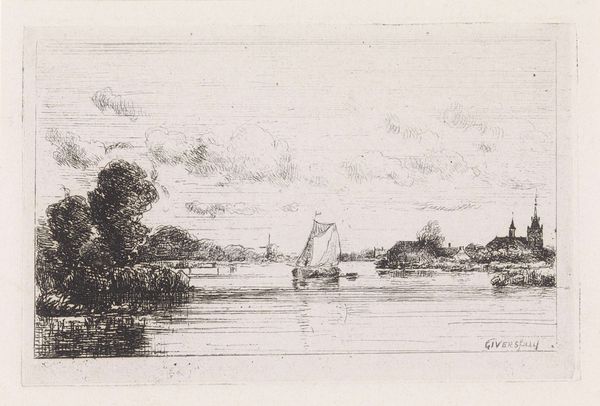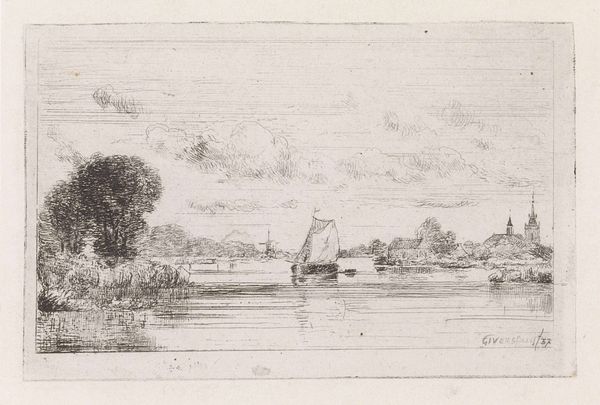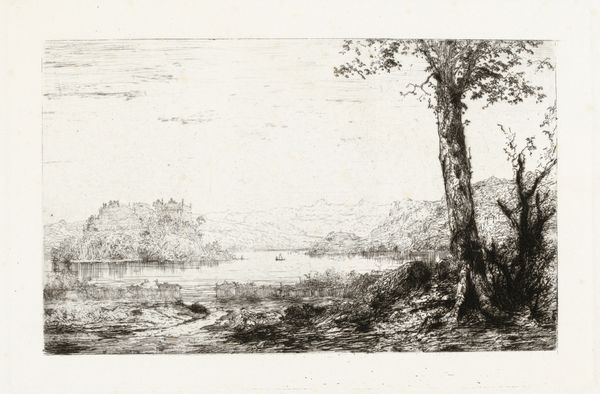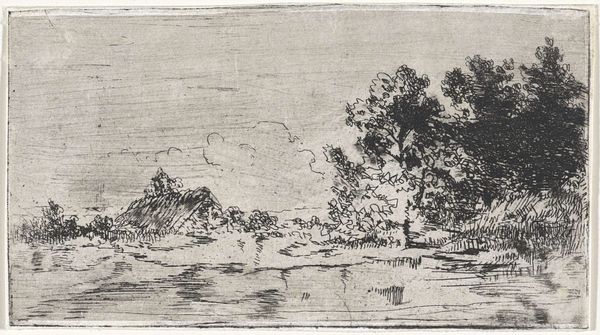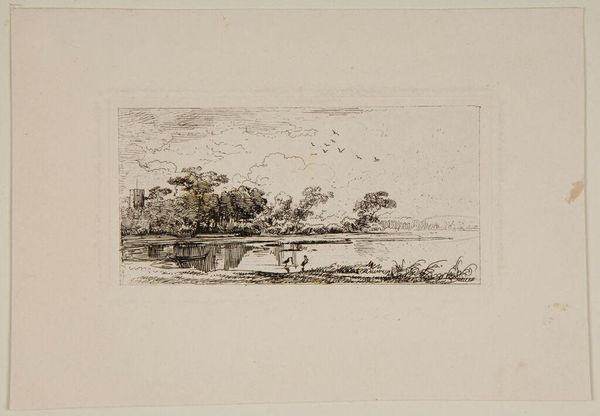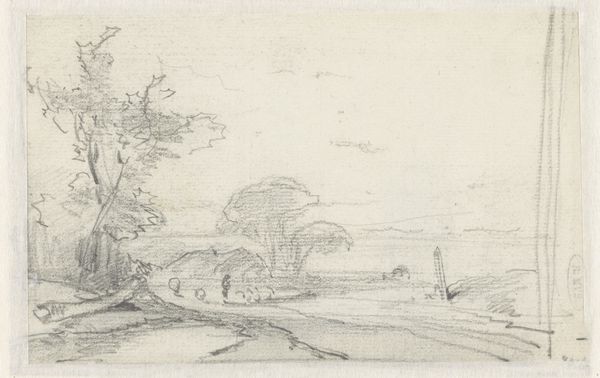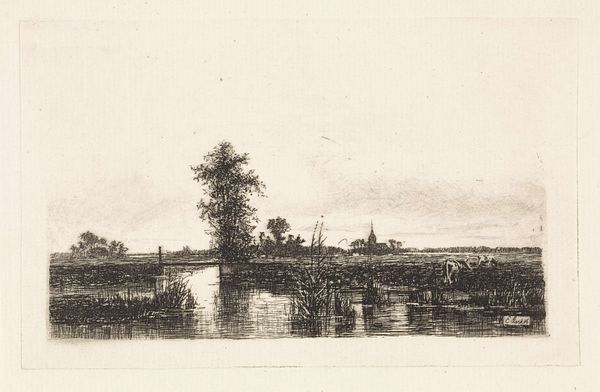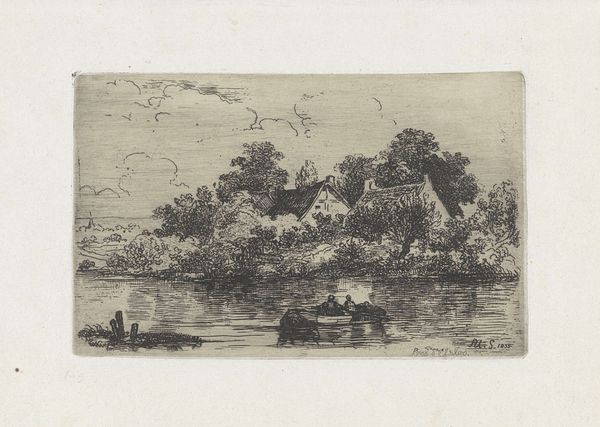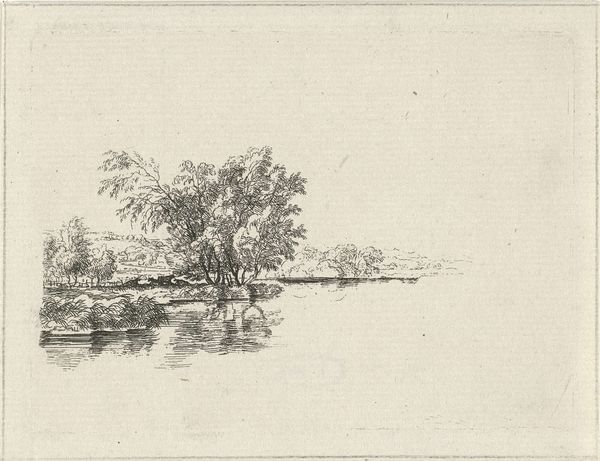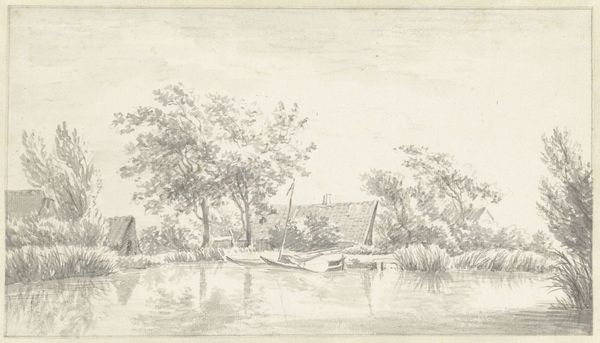
print, etching
# print
#
etching
#
landscape
#
river
#
realism
Dimensions: height 77 mm, width 118 mm
Copyright: Rijks Museum: Open Domain
Editor: This is "Zeilschip nabij een dorp," or "Sailboat near a Village," by Gijsbertus Johannes Verspuy, from 1857. It's an etching, which gives it such fine detail. It feels very serene to me, almost dreamlike in its simplicity. What do you see in this piece? Curator: Note how the artist carefully composed the scene, creating a sense of depth and balance. The use of line—thin and delicate in some areas, denser and more textured in others—to build form and suggest light is remarkable. Consider the varying densities that define the trees on the left in comparison to the still, flat treatment of the water’s surface, where there is an absence of detail. What effect does that variance have? Editor: It almost creates a focus… everything feels like it’s radiating from the boat in the center. I suppose it adds to that feeling of serenity because my eye isn’t jumping around looking for details. Curator: Precisely. Observe also how Verspuy employed hatching and cross-hatching techniques to create areas of shadow and light. This tonal range enhances the illusion of three-dimensionality on a two-dimensional surface. Note, too, the way the composition directs our gaze across the plane. Do you agree? Editor: Yes! From those dark trees to the boat and then to the village buildings in the distance. It is very strategic. The whole piece feels remarkably controlled, almost mathematical, despite being a landscape. Curator: Exactly. And from the perspective of the Formalist, we must engage with this print by considering line, light, shading, and form, using these characteristics to interpret and appreciate its inherent value. Editor: That’s so interesting. I am going to look for how other artists used etching around this time. Thanks for helping me to focus on the formal elements!
Comments
No comments
Be the first to comment and join the conversation on the ultimate creative platform.
